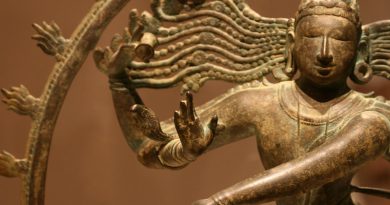Hello, Lenin? Germany’s Ostalgie Phenomenon
Culture Facts
Where: Focused in Germany, spreading throughout Europe
What’s it about: Nostalgia for the good old days of the Socialist GDR, the Berlin Wall, Free German Youth and more carefree pre-Capitalist times
Essential reading: Lenin’s complete works
Essential viewing: ‘Goodbye, Lenin’ & the documentary ‘A Car for a dollar’
Essential listening: Friday Night at the Trabi Races by Heist
Over a decade since reunification and the fall of the Berlin Wall, and after much rebuilding and regeneration of the former GDR, a strange cultural phenomenon is arising throughout Germany and indeed across Europe. A rose tinted nostalgia for the days of the German Democratic Republic (GDR), the former Communist state of East Germany, is resurrected amongst Germans, some of whom are too young to even really remember the days of Socialism rule. The term coined for this current trend is Ostalgie, a nostalgia for the East.
Ostalgie in the movies and television
This cultural resurgence manifests itself in various forms and through a variety of media. Perhaps the biggest example is the nationwide broadcasting of the television programme called the GDR Show, hosted by Olympic Skater Katrina Witt. In the show much reminiscing takes place between former GDR residents, poets, writers and musicians each expressing their views about East Germany, Communist Ideals and the state of change in contemporary Germany.
German film industry has also increased the exposure of Ostalgie on an international scale. Wolfgang Becker’s internationally acclaimed film Goodbye, Lenin won the Lola award for best German film in 2003. During the film the audience learns of how Alex’s mother – a staunch supporter of the GDR and the Communist Party – slips into a coma before reunification in 1989. Eight months after the wall comes down she regains consciousness but is desperately weak, the doctors advise that any sudden shock might send her deep into a coma once more. Alex decides to hide the developments of the past eight months from his mother, and within the confines of their small family flat he maintains the existence of the GDR. The film pays fantastic attention to detail, and whilst gently mocking of the pre-unification East Berlin has a certain fondness for all it depicts. The film was a success throughout Europe as were films which preceded ‘Lenin’ with a similar Ostalgic theme. Peter Trimm’s Go Trabi Go shows a family from Saxonny naively set out on their first foreign holiday driving over the Alps and into Italy, similar is Leander Hausmann’s debut Sonnenalle during which the iconography and obsession with detail is incredible.
Who are the Ostalgie aficionados?
Ostalgie is not only supported by those who used to live in the former GDR, indeed the most avid followers were probably too young to remember the wall, let alone the actuality of living within the GDR. Ostalgie is very much a youth culture involving fanatics from the ‘trabant generation’ – named after the much celebrated, cult Trabi car. The Trabant car built in the GDR was the communist response to the need for an affordable car during the shortages that ensued after separation. The Trabi boasts a two-cylinder engine and a plastic body! The cult of the Trabi has become a phenomenon in itself and the car finds itself a collector’s item and an icon Europe-wide. U2’s Achtung Baby album cover featured the Trabi car.
Each June, Germany hosts a three-day Trabant Festival attracting over 35,000 visitors and many bands and performing acts including the likes of Joe Cocker! Much beer and wurst are consumed, and the Trabi owner enjoy track racing during the day. Maximillian Spohr’s A Car for a Dollar is an extended documentary about the Trabi phenomenon depicting this event.
Where to buy Ostalgie gear
The ‘trabant generation’ passion for all things East is fuelled by the abundance of new boutiques and shops supplying replica and original GDR products, produce and memorabilia which are springing up across Germany. N(Ost)algie is a thrift-store in Hamburg (Former West Germany!) which recycles household refuse from Dresden, selling old ornaments, furniture and clothing to Hamburg consumers as genuine GDR products. To reiterate the authenticity of the GDR ideal, Lenin’s ‘Complete Works’ can be found next to the cash register.
After reunification the ‘Save the Traffic Light Man’ campaign fought long and hard to preserve the traffic light men (Ampelmaenchen). The East Berlin symbols are characterised by the jaunty green walking man with his brimmed hat and the red ‘don’t walk’ man with his arms outstretched. Replicas of these symbols have found themselves in shops and market stalls (including Camden Town in London).
GDR Nightlife
Ostkost in Berlin’s trendy Prenzlaurberg is a grocery store that only sells East German produce. It’s an Ostalgic Aladdin’s Cave, the shelves lined with Vita-Cola (Eastern twist on soft drinks – with added vitamin C) and Rotkaeppchen (a sparkling, East German white wine.)
Should you wish to visit Germany and really want to experience the Ostalgie vibe, the place to head is Ostzone in Mitte, Berlin. The ceilings of this Berlin club are plastered with portraits of Karl Marx, and the clientele are dressed in their FDJ shirts (Free German Youth) and red scarves, dancing with their Ampelmaenchen pendants.
Whilst at the Ostzone club check the audience or performance area for signs of the Easty Girls, an Ostalgie twist on the spice girls distinguished by their GDR school uniforms and their ‘Pioneer’ red scarves.
German supporters of the Ostalgie phenomenon are keen to insist that the movement is based purely on obsession for the iconography of the East and not a desperate longing for separation once more. In recent poles 11% of former GDR residents believed that life before reunification was better, Ostalgie therefore, whilst not based on desire for the ideals of the East, manifests itself as an immerging commercial market for Germany on a domestic and international scale.
MORE INFORMATION
A Car for a Dollar
An extended documentary about the Trabi phenomenon.
Super 8 Recordings
Meet Heist, England’s very own protagonists of the Ostalgie movement who have played at the Trabant festival to promote their album ‘Friday Night at the Trabi Races’
By Katie Drew




